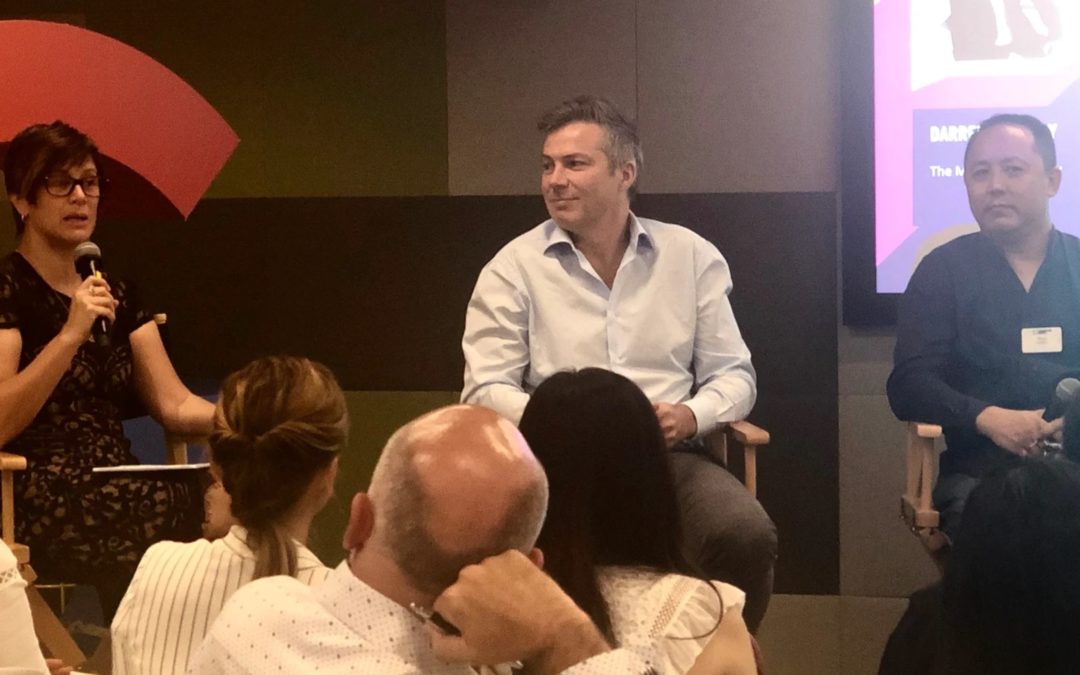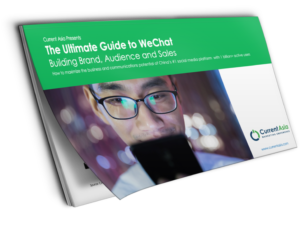At The Marketing Society’s How to Innovate with Success breakfast in Hong Kong Ed Bell, Cathay Pacific’s General Manager Brand, Insights and Marketing Communications; Sean Seah, HSBC’s Head of Innovation and Partnerships (AMH); and Leonie Valentine, Google Hong Kong’s Managing Director, Sales & Operations. explored how established businesses with legacy systems innovate for competitive advantage.
Ed Bell from Cathay said CEO-lead commitment to change is important. Digital initiatives and partnerships with Salesforce, Google, and many others are effective when there is a company-wide shared definition of the problem. Progress starts when companies realize that “What got us here won’t get us there” and there is a new contract for future.
HSBC’s Sean Seah highlighted the value of incremental change. Pitch discrete projects with specific business results to management, execute well, and gain momentum from there. They have successfully rolled out PayMe, Reward+ and their stock trading app.
Leonie Valentine from Google highlighted the importance of not getting lost in the buzzwords around digital transformation and the need to deliver for business and customers. The key is to translate human experience into customer experience by understanding the highest value touch points – sometimes that’s a journey and sometimes it’s an episode.
Ed shared the Cathay customer journey, and explained how enhancements are being made at every step along the way from pre-trip research and communications to arrival and after trip surveys and everything in between. Change is driven by the demand side: what does the customer want? We’re headed for the time when you get scanned once at the airport and then just walk through to the plane.
Leonie pointed out that digital transformation must be “a team sport.” Across the organization, whether you have digital in your title or not, you have a role to play. It’s not about being old or young, but your will to keep up with change, trends and technology.
Ed said that having a specific digital executives can be useful for a company with legacy systems, but their objective should be to make themselves redundant. The digital team can help accelerate what everyone in the organisation would be doing anyway, and everyone should have access to digital platforms such as Salesforce.com no matter what Department they’re in.
Sean noted that HSBC’s digital team had risen from 50 to 5,000 as part of the bank’s “burning opportunity” to meet customers’ needs and stay competitive amid the rise of virtual banks and other changes in the financial services environment.
Sean pointed out that privacy is all about trust and value exchange – what information is the customer willing to share in order to get a better experience or services.
Ed made the point that while it’s important to have a single data view of the customer, you need to have a multi-dimensional view to understand them and what communications they want to receive when. “We’re always aware we are part of the customer puzzle – we do want to become a bigger piece of it.”
Leonie said that data is indeed the new oil but there are lots of different grades of oil, ranging from premium down to cooking oil. In her view, most companies have recycled cooking oil data and its of little value unless its cleaned up.
Sean urged the audience to be curious and experiment. He shared his “butterfly” process for digital transformation, starting with the pitch, then prototyping projects, before moving to the MVP (minimum via product) phase. He stressed the importance of defining the problem solved or potential of any digital solution, and the potential of upside such as revenue for the organisation.
Ed talked about how Cathay had focussed on improving the customer experience at every touchpoint by bringing in a full range of technologies from AI, to chatbots, to AI to block chain. One click check in, easier re-booking, a better Asia Miles experience, and an improved way to take meal orders are just a few of the benefits to passengers.
Leonie talked about the importance of driving the innovation process. It’s not just a question of whether you are a start-up or an established corporation. There needs to be a long term view and clearly articulated process, linked to the company’s goals with people’s compensation tied to the outcomes, such as rising NPS (Net Promoter Score). And there must be enough slack in the system to allow people to get work done – like Google’s 20% projects.
By David Ketchum, CEO, Current Asia

